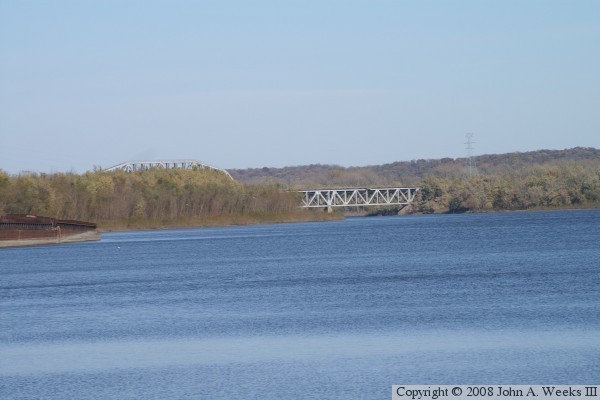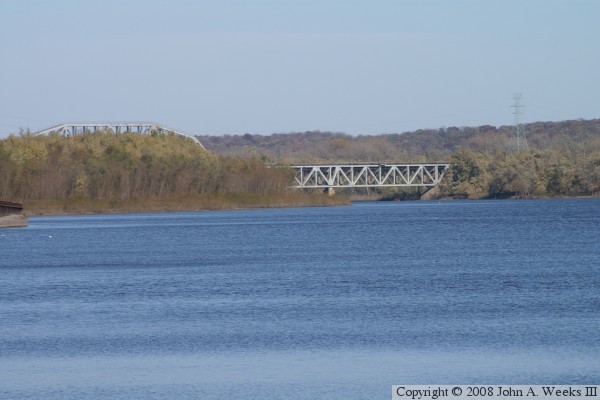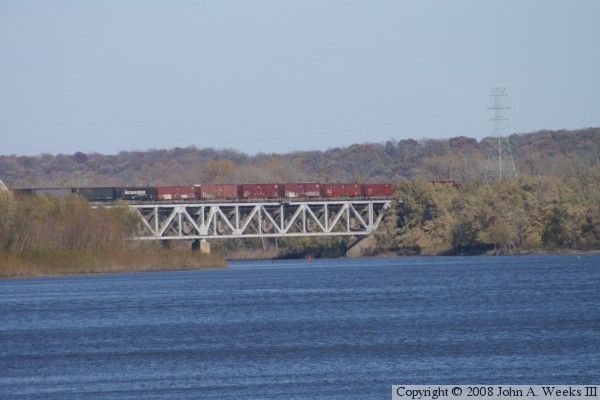Chillicothe was a major stop on the Santa Fe mainline between Chicago and Kansas City. Given that rail passenger service was the only game in town for cross country travel prior to the turn of the century, the line through Chillicothe was heavily used. The trains often changed crews at Chillicothe, with many railroad crew members living in the area.
The draw span became a real problem as both rail and navigation traffic increased during the 1920s. The Santa Fe Railroad began planning for a new railroad bridge. The new bridge was finally built in 1932. The new line was built on a slightly different alignment, resulting in the new bridge crossing the old bridge. The main span for the new bridge was built in place but on jacks that caused it to be several feet higher than needed. This was required because the main span of the old bridge was still in use at this time. Once the new bridge was ready to go, in a single day, all traffic was stopped. The main span of the old bridge was lowered onto barges, and the main span of the new bridge was lowered into position. Trains started using the new bridge the very next day.
The 1932 version of the Chillicothe Rail Bridge features deck truss spans. Those are bridge sections with the metal truss work built under the main travel deck. The mid-river span over the navigation channel is a large single span through truss. A through truss is where the train runs on a deck that goes on a path through the middle of the truss work. The bottom of the truss is 66 feet above the normal river level, which allows navigation traffic to freely travel under the bridge without the need for a draw span, lift span, or swing span.
This is a very busy bridge. I observed three trains within a 30 minute period on a Sunday afternoon. Since the BNSF merger, the Burlington Northern now uses the Santa Fe route between Chicago and Kansas City rather than the longer BN route. Southern Pacific had trackage rights over the BN route. Post merger, the Southern Pacific also uses the Santa Fe mainline, which adds even more traffic to the bridge. Finally, Southern Pacific was taken over by the Union Pacific, giving the UP options to use the bridge.
There is no public access near the bridge, so definitive photographs are currently a work in progress. Just south of the river crossing is the one major obstacle for trains between Chicago and Kansas City. That is the five mile climb out of the Illinois River valley known as Edelstein Hill. A curve in the railroad at mile post 133, known as Houlihan's Curve, is a very popular railfan location.



